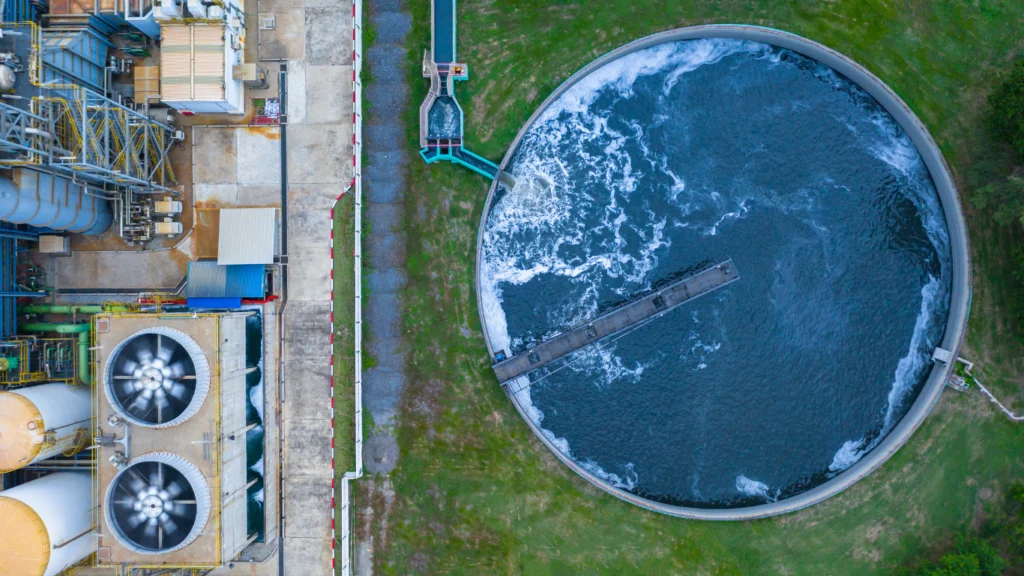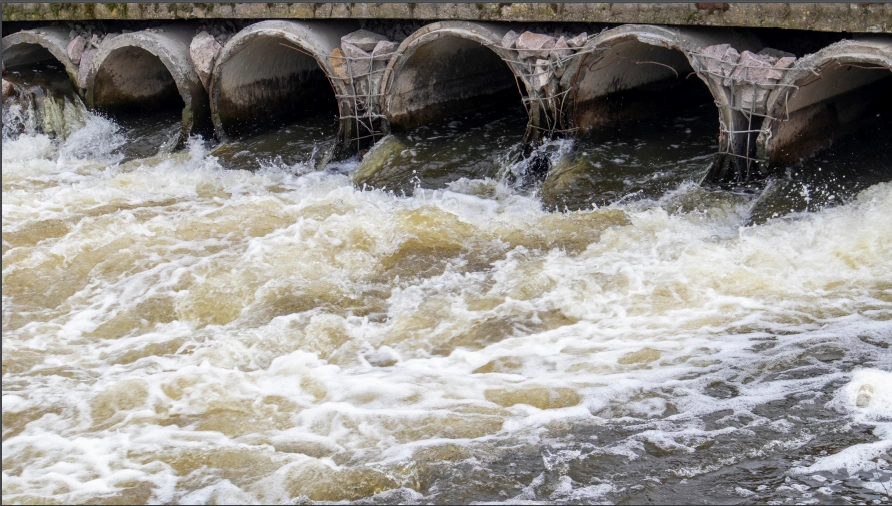In response to the urgent water scarcity challenge, India is implementing transformative liquid waste management regulations focused on Waste Management, Water Reuse, and Zero Liquid Discharge (ZLD). With rapid urbanization, climate change, and high demand across agricultural, industrial, and municipal sectors, efficient water use has become critical. Nearly 600 million people in India already face high water stress, and rising industrial demand is amplifying the strain on water resources. The government’s focus on sustainable water management and waste reduction is leading to a “Water Reuse Revolution,” with industries now mandated to adopt practices that minimize waste, protect local water bodies, and conserve water for future use.
The Need for Water Reuse in India’s Waste Management Landscape
India’s shift toward water reuse is essential for conserving resources and reducing environmental impact. Industries, from textiles and pharmaceuticals to food and beverage production, consume vast quantities of water and discharge pollutant-rich wastewater. By treating and reusing water, these industries can mitigate freshwater demand and reduce pollution, helping create a more sustainable, circular water economy.
Water reuse also aligns with broader governmental sustainability objectives, such as the Clean Ganga Mission, which focuses on reducing wastewater inflow into India’s sacred river, and the Jal Shakti Abhiyan, which promotes water conservation. By reusing treated wastewater, industries play a crucial role in preserving freshwater resources, especially in arid and semi-arid regions where groundwater levels are dangerously low.
Take Action Now—Help Conserve Water For A Sustainable Future!
Zero Liquid Discharge (ZLD): A Game-Changer in Waste Management

Zero Liquid Discharge (ZLD) is a waste management approach that prevents liquid waste from being discharged into the environment. This goal is achieved by treating and recycling wastewater until only solid residues remain, which can be disposed of or even reused. The ZLD process typically involves advanced filtration, evaporation, and crystallization technologies that separate clean water from dissolved salts and other pollutants.
India’s Ministry of Environment, Forest, and Climate Change (MoEFCC) has mandated ZLD in several high-impact industries, such as textiles, pharmaceuticals, and chemicals, where wastewater is highly toxic. ZLD prevents contamination of water bodies, supports water reuse, and aligns industries with the new environmental guidelines.
Regulatory Trends Driving Waste Management Innovation
India’s regulatory landscape is rapidly evolving to encourage sustainable waste management practices, with significant trends shaping the shift toward more efficient and eco-friendly water treatment methods:
- Expansion of ZLD Requirements: Regulatory authorities are broadening the scope of Zero Liquid Discharge (ZLD) mandates, extending them to a wider range of industries, from textiles and tanneries to power plants. This move ensures that businesses implement sustainable water treatment strategies that reduce freshwater consumption and minimize wastewater discharge, aligning with the country’s growing focus on responsible water management.
- Financial Incentives for Sustainable Practices: The Indian government is introducing subsidies and financial incentives for industries that implement water conservation technologies. By making solutions for water reuse and ZLD more accessible, these incentives are encouraging businesses to adopt more energy-efficient and cost-effective methods that contribute to environmental sustainability.
- Stricter Monitoring and Compliance Checks: With the rising emphasis on waste management standards, there is an increase in regulatory monitoring and inspections of industries. Stricter compliance checks and penalties for non-compliance are motivating industries to invest in technologies that minimize environmental impact while maximizing resource recovery, such as optimizing treated wastewater for reuse at high concentrations, thus promoting water conservation without relying on energy-intensive processes.
These regulatory trends highlight a significant shift toward more rigorous waste management and pollution control measures. Companies are now encouraged to explore and adopt technologies that enable better water conservation and more efficient, responsible waste disposal, ensuring a sustainable future for India’s water resources.
Implement ZLD Now For A Sustainable Tomorrow!
Technologies Enabling the Water Reuse Revolution
A variety of advanced technologies are driving water reuse and Zero Liquid Discharge (ZLD) adoption in India, helping industries conserve freshwater and minimize wastewater discharge. These technologies include:
- Efficient Wastewater Treatment: Scaleban’s approach focuses on optimizing treated wastewater for reuse, especially in cooling towers, where water can be used multiple times without relying on traditional high-energy filtration systems like Reverse Osmosis (RO). This method supports higher cycles of concentration (COC) and total dissolved solids (TDS), reducing freshwater consumption.
- High-Efficiency Water Recovery: By concentrating wastewater efficiently, Scaleban’s system minimizes energy use while recovering water for reuse, enabling industries to recycle water with minimal impact on the environment.
- Minimizing Freshwater Dependency: Rather than employing energy-intensive technologies, Scaleban’s solution focuses on reducing the dependency on freshwater resources by improving the performance of water systems at higher TDS levels and reducing the overall energy consumption for water treatment processes.
These innovative approaches offer industries a sustainable solution for wastewater management, helping them meet regulatory requirements while reducing energy costs and environmental impact. This contributes to building more resilient water management systems, which is vital in a water-scarce country like India.
The Benefits of Water Reuse and ZLD Adoption in India

Water reuse and ZLD adoption offer tangible benefits for Indian industries, environmental sustainability, and community welfare. Here are a few key advantages:
- Conservation of Freshwater Resources: With effective water reuse practices, industries reduce their dependency on freshwater, alleviating pressure on India’s already stressed water resources.
- Cost Savings: Implementing water reuse and ZLD can reduce long-term costs for industries by lowering water acquisition expenses, minimizing wastewater treatment fees, and avoiding regulatory fines.
- Corporate Responsibility and Brand Reputation: In an era of heightened environmental awareness, companies that demonstrate a commitment to sustainable water use and waste reduction are often perceived more positively by consumers and stakeholders.
Implement ZLD Today—Save Water, Save Costs, And Boost Sustainability!
Challenges and the Road Ahead
Despite the advantages, industries face challenges in adopting water reuse and ZLD practices, including high capital costs, complex technical requirements, and energy consumption. ZLD systems require considerable investment, and small to medium enterprises (SMEs) may struggle to afford advanced waste treatment technologies. However, as regulatory support, technological advancements, and financial incentives improve, the barriers to ZLD adoption are likely to diminish.
Moreover, India’s commitment to research and development in sustainable waste management continues to grow, with government agencies and private sectors investing in innovative solutions to lower costs and energy consumption for ZLD and water reuse technologies. In the near future, these innovations will likely enable even more industries to participate in India’s water reuse revolution.
Final Thoughts
India’s journey toward sustainable Waste Management through Water Reuse and Zero Liquid Discharge (ZLD) is a vital step toward addressing the nation’s water scarcity and pollution challenges. By implementing strict regulations, promoting cutting-edge technologies, and encouraging water reuse, the country is paving the way for a more sustainable, resource-efficient industrial sector. As more industries embrace these practices, India is positioning itself as a global leader in sustainable water management—a necessary revolution that will have long-lasting benefits for its people, environment, and economy.
